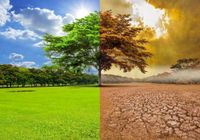Nigeria is facing an environmental crossroads. In recent months, the nation has been battered by its most severe flooding in 60 years, with the Niger River in the north overflowing and leaving a trail of devastation—over 150 lives lost, thousands of homes and farmlands destroyed, and entire communities upended. The Mokwa flood in May 2025 was especially tragic, claiming about 500 lives, leaving 600 missing, and damaging vital bridges, roads, and more than 4,000 homes, according to statements released by environmental advocate Omabuwa Mene-Ejegi on August 15, 2025. These events have thrust the country’s environmental vulnerabilities into the spotlight, igniting urgent debates about the gaps between policy and action.
But the story doesn’t end with floods. Nigeria’s environmental woes reach deep into its rapidly growing cities, where informal settlements like Makoko in Lagos face a relentless environmental health crisis. Here, millions live in crowded conditions with poor sanitation, polluted water, and ineffective waste disposal—an environment that breeds preventable diseases and perpetuates poverty. As Omolola E. Badmus, an environmental remediation scientist, recently highlighted, “Environmental health is not a side issue—it is a foundation for dignity, safety, and economic opportunity.”
Makoko’s challenges are emblematic of a wider problem. Residents struggle daily with open drains that snake through narrow alleys, dumping waste directly into the lagoon. Clean drinking water is a luxury, and health workers report that over 40% of children under five in some areas suffer from waterborne diseases like cholera and typhoid each year. Respiratory infections are rampant, worsened by the burning of waste and the close quarters in which people live. Frequent heavy rains flood Makoko multiple times annually, spreading contaminants and making it nearly impossible to keep living spaces clean. Rising temperatures further accelerate bacterial growth in stagnant water, increasing the risk of disease outbreaks.
These urban crises are compounded by Nigeria’s broader climate challenges. As Dr. Adebayo Matthew Adeleye explained on August 16, 2025, human activities—including rapid population growth, urbanization, deforestation, and a heavy reliance on fossil fuels—are primary drivers of Nigeria’s climate change issues. The burning of fossil fuels in industry and transportation releases vast amounts of greenhouse gases, especially carbon dioxide. Deforestation, driven by logging, agricultural expansion, and infrastructure development, reduces the Earth’s capacity to absorb CO₂, worsening global warming. Nigeria’s dependence on oil and gas exports, while economically vital, has made it a significant contributor to global greenhouse gas emissions.
The effects of these environmental pressures ripple across the country. Erratic weather patterns have become the new normal, with prolonged droughts in the north and intense flooding in the south. The 2022 floods alone displaced over 2.5 million people, severely disrupting agriculture and livelihoods. Agriculture, which employs more than 70% of Nigerians, has been hit hard—reduced rainfall and increased droughts have led to crop failures, threatening food security for millions. Coastal cities like Lagos and Port Harcourt are grappling with rising sea levels and coastal erosion, putting homes and infrastructure at risk. Health challenges abound, with increased temperatures and changing weather patterns fueling the spread of diseases such as malaria and Lassa fever.
Gully erosion is another silent but devastating threat, particularly in southeastern Nigeria. Intense rainfall and deforestation have carved deep ravines into the landscape, destroying farmlands and infrastructure. According to Mene-Ejegi, “Nigeria’s gully erosion crisis, most severe in the southeast, has destroyed farmlands and infrastructure due to intense rainfall and deforestation.”
Despite these mounting challenges, Nigeria is not without tools or plans. The country has a Climate Change Act, a Climate Change Fund, and a national action plan. It has ratified the Paris Agreement and invested in renewable energy projects such as the Kano Solar Park and the Kaduna Wind Farm. Large-scale afforestation and reforestation programs, like the Great Green Wall project, aim to combat desertification in the Sahel region. There are also community engagement and education campaigns to promote sustainable practices among farmers and urban residents.
Yet, as Mene-Ejegi and other experts point out, the gap between legislation and effective action remains wide. “This shows that although legal frameworks exist, implementation and adaptation measures are insufficient,” Mene-Ejegi lamented. The 2025 Mokwa flood, for instance, exposed how disaster events can outpace the country’s preparedness and response systems.
So, what’s the way forward? Technology, particularly artificial intelligence (AI), offers a glimmer of hope. Mene-Ejegi recommends leveraging AI to predict flood events days in advance, optimize water releases from dams, and support agricultural planning. In 2024–2025, the International Rescue Committee and Give Directly piloted an AI-powered flood-forecasting system in Kogi and Adamawa States. The system not only predicted flood events but also automatically triggered cash transfers to vulnerable households before the flooding occurred, helping families relocate and protect property. Platforms like Esri’s Africa Geoportal and the Geohazard Risk Mapping Initiative have enabled volunteers to build real-time flood maps, mobile reporting systems, and interactive dashboards—tools that could be scaled up nationwide.
But technology alone isn’t enough. Experts insist that the government must invest in building robust flood-control infrastructures, expand AI-enabled early-warning systems to all 36 states, implement large-scale reforestation to combat erosion, invest in public climate education, and enforce environmental regulations under the Climate Change Act (2021). “Technological investments and human capacity building are needed to address future environmental disasters,” Mene-Ejegi emphasized.
In Nigeria’s urban slums, the lessons are equally stark. Efforts to improve conditions in places like Makoko—clean-up drives, sanitation projects, and relocation initiatives—often fall short, hampered by underfunding, fragmentation, and a lack of long-term planning. Environmental safety assessments are rarely conducted before relocation or upgrading, meaning risks persist even as cities attempt to grow. Badmus calls for a coordinated response: “Government agencies must enforce environmental standards and embed health risk assessments into all urban planning decisions. Private sector actors need to prioritize sustainable infrastructure investment. NGOs can support with community education and mobilization, ensuring residents’ voices and knowledge shape solutions.”
Dr. Adeleye echoes the need for integrated approaches, noting that challenges such as inadequate funding, lack of infrastructure, and policy implementation gaps persist. Sustainable development and environmental preservation, he argues, must go hand in hand if Nigeria is to secure a resilient future for its citizens. “Nigeria’s experience with climate change underscores the urgent need for comprehensive action to curb emissions and adapt to environmental changes,” he wrote.
With climate disasters intensifying, urban health crises deepening, and policy implementation lagging, Nigeria stands at a pivotal moment. The solutions—technological innovation, robust infrastructure, coordinated governance, and empowered communities—are within reach, but only if the nation commits to bridging the gap between vision and reality. The stakes could not be higher for the generations to come.

